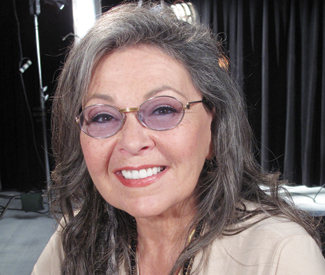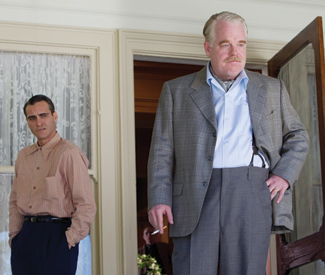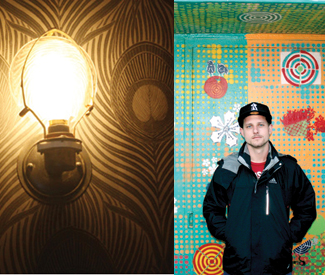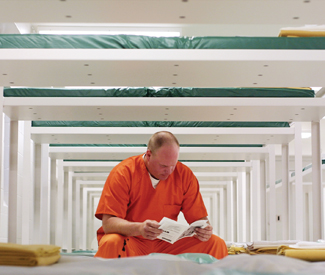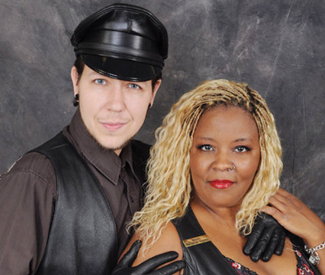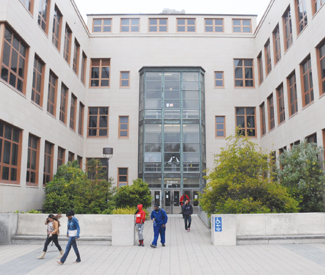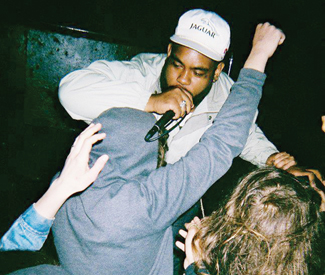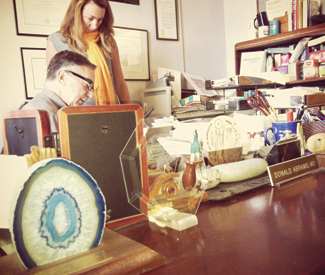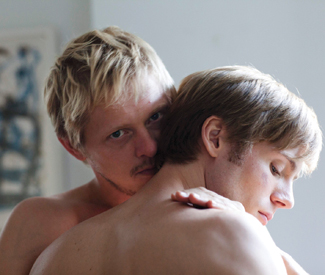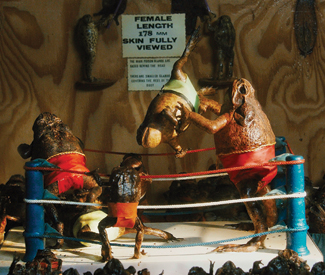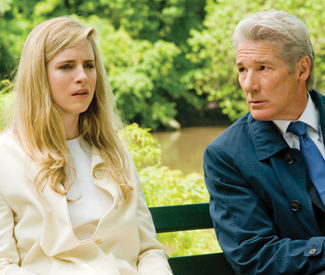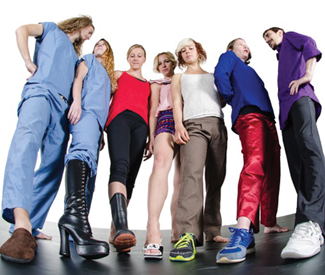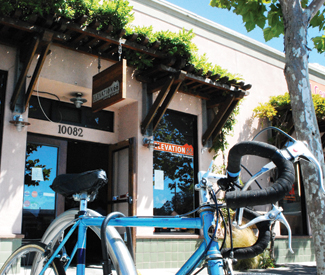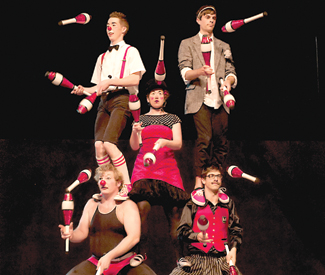SEX 2012 More swinging, less worrying over swing states. While Obama versus Romney rages, stupidly all around us, here we busy ourselves with what’s sexy. Books, art, porn stars, leather mamas — here’s some of our favorite sex spots in the Bay, today.
SEXYTIME
Were it not for Jacques Boyreau and Peter Van Horne’s ravishing new coffeetable book of hetero vintage porn posters — we took a page from its reprint of 1982’s Consenting Adults to adorn the cover of this week’s Sex Issue — such gems as Flashpants (1983) and New Wave Hookers (1985) might be lost to the sexysands of time. Sexytime: The Post-Porn Rise of the Pornoisseur (Fantagraphics, 120pp, $29.99) is a lap-sized assemblage of colorful cinematic carnality — big-busted beauties, hilarious popular movie tie-ins, and every once in awhile, a muscled stud.
Boyreau was the proprietor of the dearly departed alt-theater Werepad in Bayview, so you know he has an eye for the wild and weird of the silver screen. His book brings us back to a time when porn was just as reviled as it is in these present days of virgin-brandishing Republicans — which leaves us with the comforting lesson that, no matter what the crazies are saying on Fox News, there will always be something to jerk off to.
All political-porno reassurances aside, there’s another reason we love Sexytime more than most times: big budget porno required big budget lingerie get-ups. The lace ‘n’ garters, gauzy be-ribboned babydoll ‘fits on the Teenage Sex Therapy poster — not to mention the décolletage-to-bellybutton drop fronts of the “jumpsuits” in Garage Girls (a film whose subtitle is “Best Lube Job in Town”)? Ours, please. Let the weekend begin!
ASK A HOT CHICK
“We’ve answered questions on every topic from fisting and negotiating D/S to recipes and thread counts,” says Princess Pandora, who hosts the “Ask A Hot Chick” radio advice program with fellow hot chick Nikki Blakk every Wednesday, 9pm-midnight, on 107.7FM The Bone. “There’s a surprising amount of things in life that can’t be handled with either more communication or more lube, but we’re here to help out with the trickier situations.”
Pandora, who’s also a dancer-owner at beloved erotic dance co-op Lusty Lady (www.lustyladysf.com, check out the Lady booth at Folsom Street Fair), and powerhouse personality Blakk met backstage at a Rammstein show, and have been taking calls for the past year from cute and lovelorn (“One girls asked us about asking another girl to prom”) and the fascinatingly weird. Each week a feisty new guest from the worlds of sex education, burlesque, or adult performance comes on the show to lend an element of surprise — and sometimes major star power.
“One of the most memorable things to happen,” Pandora says, “was when Pickles Kintaro of Hubba Hubba Revue was on. She talked about her ‘Weird’ Al Yankovich tribute. He heard about it, tweeted it, and she sold out.”
“So we know we reach a very broad audience,” she adds.
www.facebook.com/AskAHotChickRadio
MR. S LOCKER ROOM
Did the Olympics light a fire in your loins? The sight of all those sweaty, multicultural bodies straining against their Spandex, engaged in superhuman feats of strength and endurance, put a little gold on your medal? “Oh, the recent Olympic games created quite a stir with the staff,” Brian Murdy, marketing director of Mr. S Leather’s sporty-fetish Locker Room tells us. “Whether it was men’s gymnastics, swimming, diving, or water polo, everyone was into it. And then there’s soccer. It never hurts when a guy rips off his shirt in celebration and runs around dripping with sweat.”
We’re not gonna argue with that one! The Locker Room, which opened last June, stocks all sorts of yummy, play-ready uniform items in rubber, latex, leather, and Neoprene, including colorful wrestling singlets and drool-worthy knee-high sports socks.
“We had noticed a trend in the leather and rubber communities that was more sports-influenced, and we wanted to cater to this new kink,” Murdy says. “Not only was this new look sexy, it was also more affordable especially for the young up-and-coming leathermen.
“The response has been resoundingly positive, and we’re stocking some well-known brands. We’re exclusive Bay Area source for ES Collection, Addicted, Nasty Pig, Timoteo, and Cellblock 13. And we were just awarded the Puma account which shows the positive impression we’re making.”
So what’s hot for field day at Folsom 2012? “Be on the lookout for our new leather track top. You won’t go wrong in our leather or rubber football pants either. And definitely check out what ES has to offer — sportswear, swimwear, or singlets, they know how to create clothes that show off your assets.”
385 Eighth St., SF. www.mr-s-leather.com
JAMES DARLING
There was a not-so-recent time in porn when transgender adult film stars meant one thing: transwomen, or “chicks with dicks” as the industry so charmingly puts it (porn is not known for its sensitivity of language.) Not so these days, with the success of heavily-muscled transman Buck Angel and other queer stars. The lines surrounding who gets to be an on-camera sexpot are softening, leaving the world of skin flicks even more relevant in these rainbow days.
Enter James Darling, the Feminist Porn Awards’ 2012 Heartthrob of the Year, a local boy who has taken the reins of transgender porn with his new site FTM Fucker. The porn site features transmen coupling with all manner of partners: cis men, transmen, cis women, on roofs, couches, in the office… well you get the picture.
“When I started making porn I was really early in my transition,” Darling said in his Guardian interview. “I thought it was really important to have affirming images of people with bodies like mine, bodies before surgery. I wanted to show people that you can still be sexy and have hot sex prior to transitioning.”
How to make porn more representative of what hot sex is like for all of us? How about more of James Darling, for starters.
www.ftmfucker.com
GIRLVERT
We have to admit, author of Girlvert: A Porno Memoir (A Barnacle Book, 256pp, $18) Oriana Small’s paired film and spoken word performance at the recent Femina Potens Gallery-curated sex worker art Askew Festival at Yerba Buena Center for the Arts, nearly made us faint.
Small, who used to perform under the porn name of Ashley Blue, screened footage of herself at 20 years old, shot for a blow job-choking adult site. She says prior to the day’s shoot she thought she could take any kind of rough sex — but couldn’t have prepared herself for a sadistic co-star, who blocked the air to her lungs until her eyes rolled into her head, her tongue lolled out of her mouth, and she died for a moment. We’re not talking petit mort — Blue said she saw the light at the end of the tunnel.
The actual footage of this temporary death was, understandably, tough to handle for audience members at ASKEW. But Orion’s confident, unapologetic voice as she stood onstage reading the corresponding chapter from Girlvert, her new novel on her porn career, made it clear that she hardly considers herself a victim. “I just want to start off by saying, I’m okay now,” she said smilingly to dissipate any chance we’d consider her merely a victim of perversion.
Which is why we’re stoked on her new book. Each chapter title is more rudely titled than the last: “Ass Herpes,” “Double Anal,” “Ass Cream Pie.” Orion’s frank narration reminds us that the adult industry can be a wooly ride, but hey, so can the world outside it.
www.davenaz.com/oriana
FELIX D’EON
Imagine a potent folio of homoerotic drawings that combined the Art Nouveau perversity of Aubrey Beardsley; the erotic possibilities of Victorian gentleman’s clubs, classic travel postcards, and early automobile advertising; the unintentional humor of 1970s porn; a splash of ancient Japanese and Indian inked-scroll pornography; and the chaste leer of vintage physique photos. “I have this secret fantasy that some Republican will come upon my drawings one day and think that they really are from the 1800s, and every argument they’ve held about homosexuality is proved wrong,” incredible artist Felix d’Eon tells us over the phone from Mexico City.
A native of Mexico, d’Eon recently moved back after years in San Francisco, but his flashback artworks have been ubiquitous here, illustrating flyers for several scandalous parties and gaining the attention of contemporary aficionados. An excellent mimic, prolific producer, and web-savvy promoter, d’Eon works in a multitude of historical styles — throwing in a boner here, a bit of cunnilingus there — and actually earns his living through sales of his work on eBay, where he’s cultivated a large following.
“Living in San Francisco was incredibly liberating, of course, and connecting with the Radical Faeries provided me with a lot of inspiration — and of course with a lot of models, too, since they love to take their clothes off.” D’Eon moved back to Mexico to connect with his heritage and says he’s as obsessed with the indigenous art in the famed anthropological museum as much as the porn he scrolls through constantly on Tumblr. Mariachis, tarot cards, and Aztec dancers have found their way into his work, as well as Felix himself. “I’m the best model there is,” he says, “since I’ll do anything I say.”
www.felixdeon.com
ABOUT CHERRY
News that a film penned by local writer-perv and Adderall Diaries genius Stephen Elliott and Kink.com star Lorelei Lee was to be acted out by Heather Graham and James Franco and shot at Kink’s historic Armory porn palace was pretty much the most exciting thing to hit the SF sex scene in a sweaty, screaming minute.
http://www.youtube.com/watch?v=ZqQjMSRBveo
The film follows its eponymous character from the boonies, riding the T&A train all the way to San Francisco where she finds fame and fortune in the fetish porn industry. About Cherry is definitely not about Kink — the film doesn’t anywhere near the level of roughness the actual website contains. But similarly to the company, the movie doesn’t reinforce the popular notion of the porn industry as a place where young men and women come to be used up, tore up, and thrown out like a pair of scarlet fishnets. Its characters wind up there intentionally — and not to ruin the ending for you, but you won’t leave the theater despairing for their souls and safety. Porn that doesn’t ruin lives? Bizarre, right.
Strangely enough, there’s only a single evening of screenings planned for San Franciscans looking to see what Cherry‘s deal is. Stephen Elliott will be fielding questions after the early screening on Fri/21, and he’ll be joined by Lorelei for the 9:30pm show.
Fri/21, 7 and 9:30pm, $8.50-11. Castro Theatre, 429 Castro, SF. www.castrotheatre.com
SEX-POSITIVE PARENTING
How many of us actually had a positive experience learning about sex from our parents? Don’t you wish that classes existed to teach moms and dads how to communicate effectively about being GGG? Happily, in the Bay Area they do.
“It’s almost a cliché to say that families come in all shapes and sizes, but they really do.” Such were sex educator-mom Airial Clark’s words of wisdom to Kelly Lovemonster in a Guardian interview back in August. Clark was getting ready for her weekend of workshops at the Center for Sex and Culture, two days of lessons for parents who are queer, polygamous, or otherwise interested in teaching kids about sex in a way that goes beyond the dry basics taught in sex-ed at school.
One of Clark’s most important teachings is that talk of the birds and bees shouldn’t be about what the parent thinks is important to know about sex — it’s about giving kids the tools they need to navigate being human, at the time when it’s useful to them.
“A sex-positive child is safe, protected, and knows about consent and boundaries,” Clark said. “They have access to accurate and age-appropriate information about reproductive biology as well as the emotional and social realities of sexuality.” Check her website for upcoming workshops and classes, and get that much closer to an honest and positive relationship with your happy little munchkin.
www.thesexpositiveparent.com
SANDY “MAMA” REINHARDT
For the past 20 years, Mama has been one of the lynchpins of the leather community in the Bay Area. Always resplendent in her trademark leather corset, riding crop, and Jaeger shot, she tirelessly hosts fundraisers and community-building events year-round that culminate in the annual Leather Walk, in which dozens of sponsored leather folk raise the giant leather flag in the Castro and march with great fanfare to SoMa. The Leather Walk, started by Mama in 1992, always happens the Sunday before Folsom Street Fair — this year it raised more than $17,000 for the AIDS Emergency Fund and the Breast Cancer Emergency Fund, of which Mama was a founding member. (We’re kind of still hungover from the after party.)
Oh, and did we mention she turned 70 this year?
While we’re at it, we should also mention her huge and extensive “Mama’s Family” of leatherfolk and community leaders — more than 750 “Mama’s Boys and Girls” honored with a nickname and a pin to commemorate their service to the leather tradition. (The list comprises a who’s who of the scene’s recent history and many well-known San Francisco characters, including some who have passed on.) Mama also proudly represents women of color in a subculture usually publicly associated with white males. Also, she takes no shit from anybody.
Cheers, Mama — here’s to many more years of leather family loving!
www.mamasfamily.org

